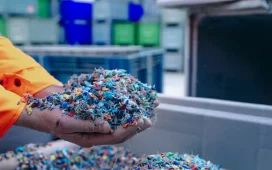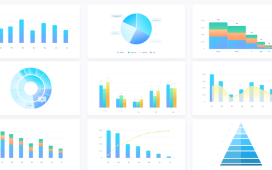You will agree that many realities minimally experience Social Media Marketing. Some work only on organic content, eliminating any advertising expenditure; then some focus little on the editorial plan and launch into continuous sponsorships and advertising.
Organic and paid are two sides of the same coin, which are necessary elements for effective social communication. How can you balance the contribution of these two channels to the traffic on your social pages? But first, let us first read about Organic Social media.
What are organic social media?
Organic social media refers to free content (posts, photos, videos, memes, stories, etc.) that all users share in their feeds, including companies and brands.
As a brand, when you upload organically to your account, you can expect people who see you look like this:
- Subscriber percentage (also known as “organic reach”)
- Subscribing Followers (if other users choose to share your post)
- Who follows the hash tag you use
It sounds easy, but the reason organic social media is the cornerstone of today’s digital marketing strategies is that it’s the best way to connect with great customers.
For example, brands use organic social media to do the following:
- Establish your personality and voice
- Build relationships by sharing informative, entertaining, and exciting content
- Attracting customers at every level of the buying process
- Support customers with customer service.
Whereas Paid Social Media Marketing offered by JDM Web Technologies includes paying social networking sites like Facebook, Youtube, Instagram etc., money for promotion.
Organic, the creative side of social media
Marketing in an organic way means using the free features made available by each social media to create content, communicate with users and build a community based on these interactions.
The first aspect to consider is related to relevance, understood as the ability of these contents to reach users interested in them. With this in mind, it is essential to know that each social media, through its algorithm, defines the evaluation criteria of this relevance. In practice, the goal of algorithms is quite simple: to offer the best possible content to the people closest to it.
For example, to determine the degree of diffusion of content in newsfeeds, Facebook ranks posts based on their relevance to the theme; YouTube instead adopts a metric linked to the video viewing time. Therefore, focusing on organic content means working on their quality and generating interest among the public.
When to choose organic?
Using organic content implies adopting a particular approach to social media marketing that can produce positive effects, for example, in the presence of situations such as these:
When you want to achieve results in the long run: building your audience and being noticed, as well as transforming users into potential customers are objectives that take time, in short: do not rush, it will take a while, but the audience that you conquer will be interested in what you do.
When your audience is not yet well defined: in a phase in which your target is not yet clear, organic content can help you by allowing you to “scan” the social universe to find and engage your target segment.
When you have a low budget for marketing: If the budget is limited, it is difficult for a company to invest in advertising. Organic content requires the effort of a creative nature but not of an economic nature.
Different Channels, Different Goals
Let us now understand the difference between organic content and paid activities. It would seem that the only distinction is the use of a budget to activate the latter, but this is not the case.
The contents published organically on your social pages are the basis of your communication. They are posted regularly and revolve around the themes dear to your business; sometimes, they can be completely impromptu. Their purpose is to generate brand awareness, raise awareness of your values and build relationships.
Advertising activities consist of messages and creativity developed primarily for commercial purposes. Their main goals are reaching your ideal audience and generating conversions, such as purchases or leads.
This synthetic examination of the differences between Organic and Paid highlights a fact: it is impossible to compare the two channels’ performance because they have different objectives and functions.
Organize a Long-Term Sustainable Strategy
As we have said, organic contents are the basis of corporate communication, so it is natural to produce and publish them continuously. A business that communicates intermittently is less reliable and quickly loses the public’s interest.
But organic content, as important as it is for long-term communication, generates few tangible results for the company! Here’s where advertising comes in handy. First, sponsoring organic content increases its reach and allows more people to see what you’ve posted. A good Content Strategy is not cheap, so your message shouldn’t be seen only by a small number of users.
In addition to sponsorships, there is real social advertising. Generating conversions through collecting leads or selling is one of the most critical aspects of marketing. The paid tools made available by social networks can help you reach the goal by carefully monitoring the results.
Giving up organic or advertising activities to save money is equivalent to compromising corporate social communication. We know that it takes several thousand rupees, often lakhs, to publish content and develop advertising campaigns, but carrying out these activities only partially could be counterproductive to the point of being worse than not doing them.
Successful social communication needs to leverage the Organic and Paid channels. By understanding the differences between these two aspects of Social Media Marketing and implementing a strategy that includes both in a balanced way, you will develop a more effective digital presence! Naveen Kumar has been the Head of Marketing at JDM Web Technologies since 2009. He is a marketing professional recognized for his achievements and contributions to record-setting traffic figures generated under his management. He has the proven ability to lead the marketing teams towards a common goal.





